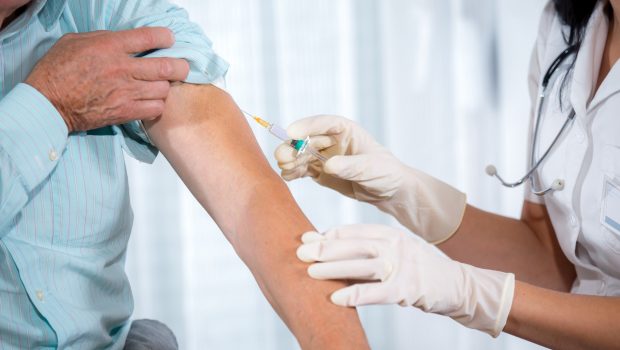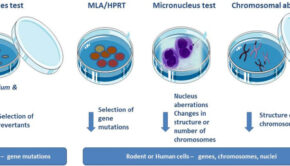Vaccines: Truth vs Fiction
Recently, vaccinating has become the center of a wide and varied public discussion, in which there is a fervent debate concerning their efficiency and potential dangers that may be hidden. It has been fueled wildly by the rapid expansion of the internet and social media, as they provide a platform for discussion and sharing of ideas, which can have both positive and negative effects.
Unfortunately, one of the problems with the quick and overwhelming amount of information concerning this debate is the abundance of claims which are not backed up by scientific evidence, but rather supported by pseudoscience or no science at all. This misinformation has led in some cases to widespread panic and a conscious decision of parents to stop vaccinating their children, something which in turn has led in a rise of many dangerous but preventable diseases.
Here are five important developments in the vaccination discussion analyzing both the real and the fictitious aspect of the debate.
1.The MMR vaccine case of 1998 and the fear of autism
One of the landmark moments in the vaccination controversary was the 1998 study released by Andrew Wakefield in the reputable British medical journal, the Lancet. In this study, Wakefield supported the claim that the MMR (Measles, Mumps and Rubella) vaccine was responsible for triggering autism in 12 children. This initial study was plagued with several problems, including the small sample study of only 12 children and that the initial results appeared biased.
Despite this, these claims led to a world-wide craze which damaged public trust not only in this particular vaccine, but also in the general policy of vaccination. Since then, Wakefield’s claims have been rebuked by numerous studies that have tried to find the link that he proposed, another sign that most probably his research was most probably fabricated.
In the meanwhile, Wakefield became a martyr figure within the anti-vaccination movement, though his medical license was removed, and his journal article was deleted from the Lancet. Since then, not only have the claims of Wakefield been proven false, but it has been discovered that there were serious conflicts of interests within this case. Wakefield was found to have received nearly half a million dollars from law firms that were active in cases of lawsuits against vaccine manufacturers.
2. Vaccines contain toxic amounts of mercury
A very common and widely circulated claim is that vaccines contain dangerous amounts of mercury, in the form of thimerosal, which is an organomercury compound. Vaccines did indeed contain amounts of thimerosal, which is a very potent anti-microbial agent that prohibits the contamination of the vaccine by fungi, bacteria and every other undesirable element which could be dangerous.
In essence, it was the most common and trusted vaccine preservative since the early 20th century. Claiming that it was responsible for various modern and contemporary vaccine complications is problematic, as it has been in wide use for about 70 years before these claims.
Thimerosal has been removed from most medicine and vaccines in the US and Europe, in an effort to reduce the overall intake of mercury compounds since 2001. It has to be noted though that thimerosal, is a less toxic form of mercury which is easily filtered by our body, mercury intake from sources like fish (especially shark, tuna, king mackerel) is in much higher concentrations and contains more potent forms of the chemical.
Despite numerous studies that have found no link between thimerosal and autism or other unknown side effects, there is still widespread belief that vaccines are highly toxic due to this particular substance, though it is no longer used in almost all cases.
3. Aluminum in Vaccines
Similarly, to the case of thimerosal, another substance which is still included in many vaccines and has been widely criticized as harmful and potentially toxic is aluminum. Aluminum is added to many vaccines as an adjuvant, a chemical that enhances the potency of the drug and ensures a better efficiency for the vaccine.
Aluminum, just like any other metal can be toxic if it accumulates in the body before our kidneys filter and remove it from our body. Thus, the only children or adults who should be concerned about aluminum poisoning are those who live in environments where daily intake of aluminum is possible, like for those who live near active mines or industries that exploit aluminum or for those that have severely weakened kidney function.
Depending on the vaccine, it will include between 0.125 mg to 0.85 mg per dose, which is miniscule compared to the intake of aluminum from various other sources. Aluminum is found in virtually most foods (vegetables, nuts, grains, and flour), in many drinks and we inhale it in our environment. A typical adult will get near 7 – 9 mg of aluminum per day, which is about tenfold the quantity which is delivered in a vaccine dose. Aluminum is the third most abundant element on the surface of the earth, meaning that it is virtually impossible to avoid consuming it, as it is present even in the air that we breathe.
4.Vaccines are great money-makers for the drug industry
Medicine, despite having important benefits for our society, still remains an industry which aims to create profit and minimize losses. Thus, it is not unreasonable to believe that the number of vaccines that babies and later adults get are exaggerated in order to produce more profit for drug manufacturers.
Since most businesses are designed to make profit, it is understandable to be suspicious yet seeing that vaccines are designed to protect and prevent diseases, getting sick and staying sick is actually more profitable for drug manufacturers. Also, illness and disease lead to more doctors’ visits and potentially hospitalization which all in all makes more money for the industrial healthcare complex than being well. Prolonged illness and their subsequent treatments would in turn produce comparatively much more revenue for the healthcare industry, compared to cost of vaccination.
5. There is no need for vaccination because of herd immunity
Another fictitious claim for advocates of not vaccinating is that they are protected through the herd immunity of our society. In other words, they believe that because the majority of the population is vaccinated, viruses are eliminated and can’t spread be to them.
Herd immunity benefits infants who are too young to receive vaccines or people with immunocompromised systems like seniors, thus they need to depend on herd immunity in order to remain healthy. Yet, relying on herd immunity is not sufficient as there are yearly cases of local outbreaks of contagious diseases in the US and Europe, especially in populations that have a lower than normal percentage of herd immunity.
Herd immunity depends on a smooth and uniform application of vaccination programs, in order to maintain a veil of protection for those who can’t get vaccinated for medical reasons. Abstaining from vaccines means that we directly comprise the very system that protects society, as almost all diseases demand over 80% of vaccination coverage in the population in order for the effect of herd immunity to be strong enough. If the threshold is lowered, this will lead to local or even national outbreaks and might even include dangerous and rapid mutations due to the unchecked nature of the contagion.
The vaccination debate is still an area of intense controversary full of conflicting interests, misinformation and traces of conspiracy theories, making it both complex and hard to refute. Negative consequences from not vaccinating are nothing short of death, thus real facts are needed in greater demand. As the public receives scientific data they can trust, suspicion will be replaced with facts from medical experts on what is best for our children.

















